What is garden dill and its characteristics
Ordinary garden dill, which we are used to seeing in garden beds, is used not only as a spice in cooking. It is also used in medicine and cosmetology.
From the article you will learn everything about dill: a photo of the plant, how to grow and store it correctly, what kind of inflorescence does dill have and how does it bloom, what family it belongs to.
Description and botanical characteristics of the plant
First, let's find out what dill is - is it an annual plant or a perennial? Dill is an annual herbaceous plant that belongs to the monotypic genus. It exists in a single form, which is called fragrant dill or garden dill. Belongs to the Umbrella family and is considered short-lived.
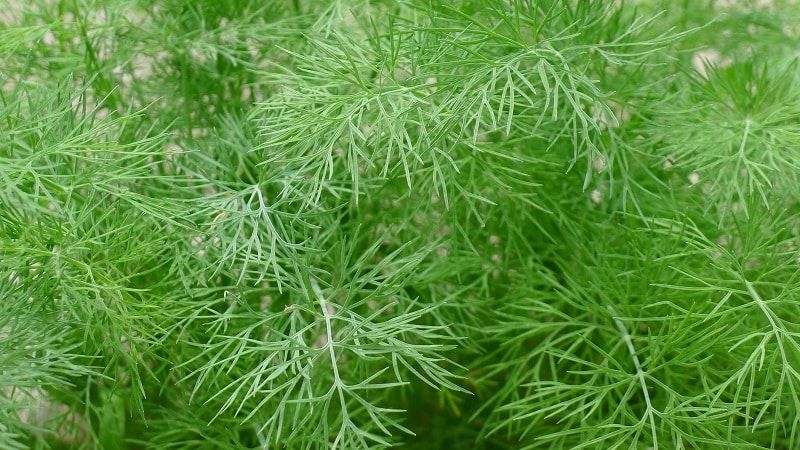
Appearance
A plant with a strong characteristic odor, reaching a height of 1.5 m with a straight or weakly branching single, pubescent stem.. The stem is furrowed, bluish-green, branches in the upper part, curved between the branches.
Leaves on petioles are located below, the upper sessile leaves are without petioles. The shape of the leaves is ovoid, they are pinnately dissected, the lobules of the last order are filamentous.
Blooms from June. Small flowers with yellow petals are collected in umbels with a diameter of 2-4 cm, which in turn form double rayed umbels with a diameter of up to 20 cm.
The seeds ripen at the end of summer. They have an oblong, flattened shape, up to 5 mm in length and about 2 mm in thickness.Ripe fruits are brown in color and have a bright spicy aroma. Many people are interested in what else dill seeds are called, by analogy with cilantro and coriander. However, there is no special name for them - they are simply dill seeds.
Kinds
There are several varieties of dill:
- Ordinary - with one stem on which the leaves are attached. It quickly goes into bloom, developing an umbrella with seeds.
- Bushy – forms several internodes from the base, from which additional shoots appear. The main stem grows slowly, producing more greenery.
- Densely leafy – there are many leaves on the main stem; it looks like a small spruce.
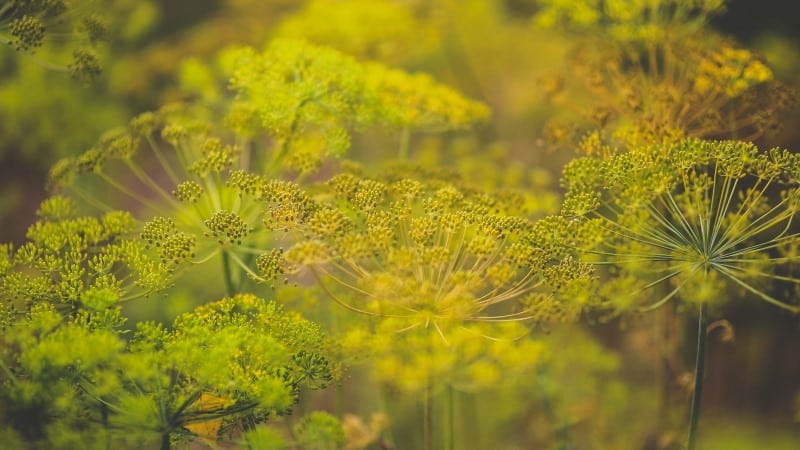
Where does it grow?
Dill has spread throughout the world. It is grown in vegetable gardens, often growing in plots by itself as a weed. It is found in the wild in Central and Southwest Asia, North Africa, the Himalayas and Iran, which are traditionally considered the homeland of dill.
Chemical composition, trace elements, vitamins and calorie content
The leaves contain carbohydrates, pectins, carotene, riboflavin, thiamine, ascorbic, nicotinic acids, and a set of mineral salts (potassium, iron, phosphorus, calcium).
All parts of the plant contain flavonoids: quercetin, isorhamnetin, kaempferol. It also contains essential oil, which gives a specific smell, especially a lot of it in the seeds - up to 4%.
Reference. The essential oil from the fruit is a light yellow liquid with a delicate, pleasant smell of caraway, from the herbaceous part - a greenish liquid with the smell of dill.
The seeds contain 14-15% proteins and up to 18% fatty oil, which includes petroselinic, linoleic, oleic and palmitic acids.
Calorie content dill per 100 g:
- fresh – 40 kcal;
- dried – 258 kcal;
- seeds – 305 kcal.
Nutritional value of fresh dill per 100 g: proteins – 2.5 g, fats – 0.5 g, carbohydrates – 6.3 g.
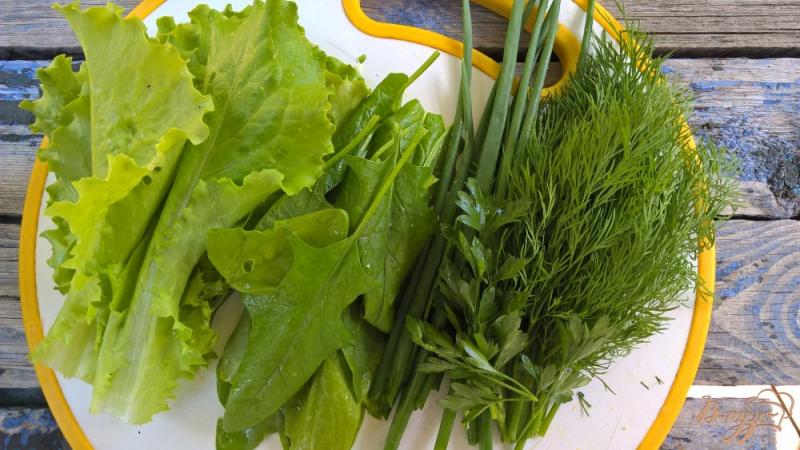
How does it affect the human body
Dill is a spicy herb that has a lot of useful properties. The most commonly used is its greens, which contain many vitamins beneficial to the body.
Beneficial features
Dill contains ascorbic acid in such quantities that only 100 g of fresh herbs are required to replenish the daily requirement of vitamin C. By adding a bunch of dill to the salad, you will get enough vitamins B1, B2, B5, B9, PP.
Increased calcium content indispensable for the skeletal system, makes this spicy herb an assistant in the healing of fractures. Dill is recommended to be added to the daily diet of older people to prevent osteoporosis.
Phytoncides in combination with ascorbic acid and other active substances, they have a disinfecting, soothing and analgesic effect.
Essential oils promote the digestion of fatty and heavy foods.
Attention! One of the main therapeutic properties of dill seeds is the reduction of gas formation in the intestines. Therefore, “dill water” is made from them, which is given to babies with colic in the first months of life.
Harm
Dill is useful, but it is not recommended to use it in excessive quantities. In rare cases, individual intolerance to spicy dill occurs: essential oils can provoke an allergic reaction.
For whom is dill contraindicated?
Large amounts of dill and treatment with drugs made from it are not recommended for people with low blood pressure.
Features of the use of dill
All parts of the plant contain useful substances, so green leaves, stems, and seeds of the plant are used.In addition to the traditional use in cooking, healing tinctures, decoctions, oils and extracts are prepared from them. They are used in folk medicine and cosmetology. Dill products have a lot of useful properties and almost no contraindications.
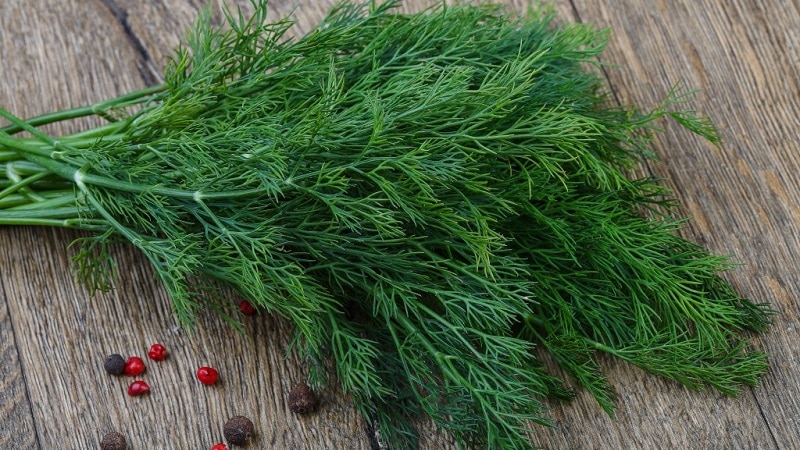
In folk medicine
The medicinal properties of dill have been proven by science; the seeds are officially considered medicinal raw materials. Greens are also used in dietetics and folk medicine.
An infusion of shoots and leaves, as well as a decoction of them, can be easily prepared at home. It is taken for hypertension and as a mild pain reliever and diuretic.
Essential oil and seeds are a natural and safe sedative and antispasmodic.
An infusion or decoction of the seeds is used orally for disorders of the gastrointestinal tract, as an antihemorrhoidal agent. Externally, it acts as a wound-healing agent, relieves inflammation and itching from insect bites. For the same purpose, a compress with a paste of dill leaves is applied externally.
In cosmetology
Crushed greens are included in masks and compresses designed to lighten age spots. They refresh the skin of the face, neck, hands and nourish it with vitamins.
Dill ice cubes relieve puffiness around the eyes, reduce inflammation and moisturize the skin.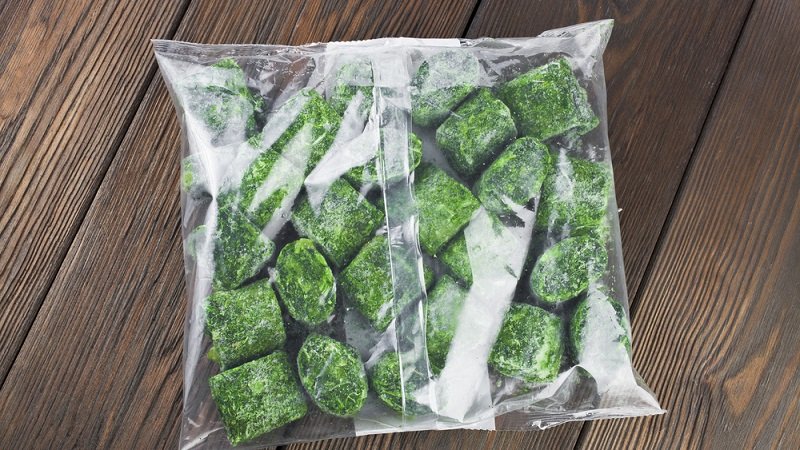
Oils from dill seeds, as well as various extracts from herbs, are used in the production of creams, lotions, soaps, and toothpaste.
In cooking
Since ancient times, spicy dill has become a seasoning for preparing various dishes: meat, fish, potatoes, salads.
Fresh leaves and stems are added to salads, hot and cold dishes. Umbrellas of inflorescences are used for home canning of vegetables. Dill is used in cooking in fresh, dry and salted form.
Features of growing dill
Dill is an unpretentious cold-resistant plant that does not require careful care. It's easy to growing, easily propagated by self-sowing, grows almost like a weed, but its agricultural technology also has its own characteristics.
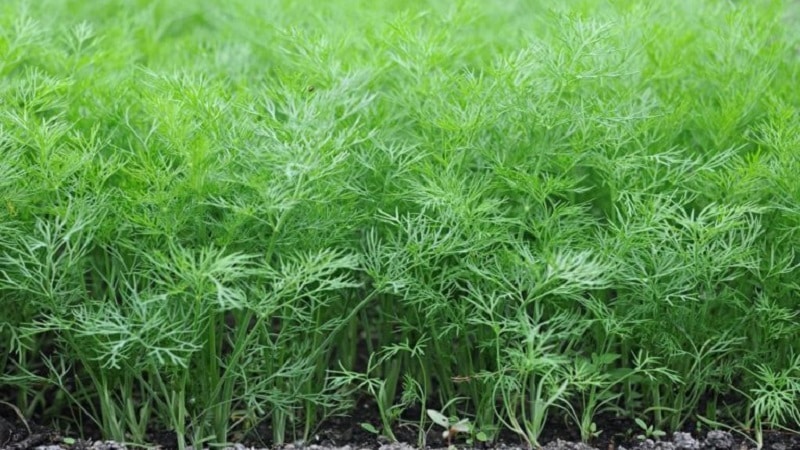
Landing
You can sow dill in mid-spring, immediately after the snow melts, when the air temperature is above –4°C. Seeds will begin to germinate at a temperature of +3°C.
To get an early harvest, start landing when the right temperature arrives and sow every 2 weeks until the end of summer, ensuring a constant collection of fresh greens.
Dill sprouts well sown before winter. To do this, at the end of autumn, the beds are prepared, fertilizer is applied, they are thoroughly loosened and furrows are made 2 cm deep with a distance of 20 cm between the rows. Then they are covered until frost sets in.
Sow seeds in frozen ground, sprinkled with a soil substrate of peat and humus. In the spring, when the temperature is favorable, shoots will appear. This will be the earliest harvest in open ground - 2 weeks earlier than during spring planting.
Summer planting does not give such a result, especially if pre-sowing treatment of the planting material is not carried out. Opening the seed shell is difficult due to the abundance of essential oils, which are difficult to destroy if the seeds have not overwintered in the ground. That's why they are specially prepared.
- Soak the seeds in hot water (+60°C) and change it several times a day. Can be soaked in growth stimulants.
- Sprout under damp gauze for 4 days.
- Dry for half an hour and sow on prepared beds.
Dill is planted in an open, sunny place. Soils can be anything.
Growing
The first shoots appear approximately 10 days after sowing.It takes 1.5-2 months from the moment of planting to harvesting it for greenery. Then the flowers-umbrellas develop and seeds are formed.
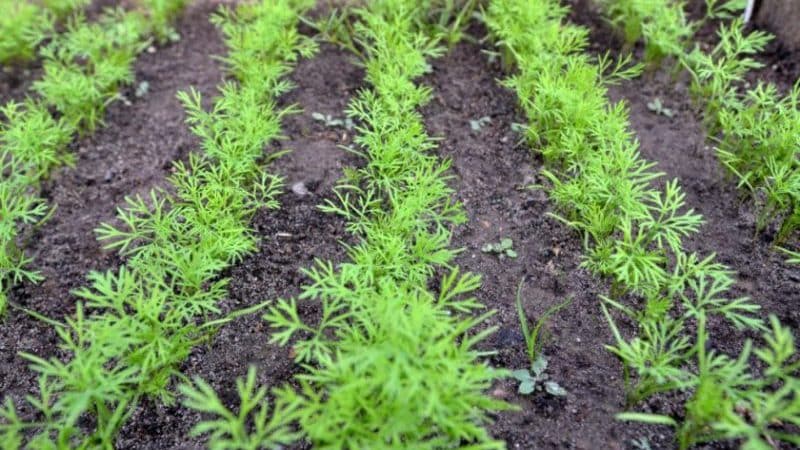
Dill is grown:
- in open ground (spring and winter sowing);
- in closed ground (greenhouse, greenhouse);
- at home (on the windowsill or balcony).
In open ground, several harvests are obtained over the summer using repeated sowings. This is the most common and easiest method of growing dill.
Reference. To obtain two harvests from one root, the greens are cut off when they reach 20-25 cm, leaving a growth point. Another way to get a stable harvest of dill all season long is to sow bush hybrids and varieties different ripening periods.
In a greenhouse without heating, planting begins in March, when the snow has not yet melted on the site. Grow all season until the onset of severe cold. And if you provide a temperature of +15...+20°C and additional lighting in winter, then in protected ground you will receive fresh greens all year round.
On the windowsill, dill is grown in containers. With this type of cultivation, seeds of a certain variety are selected and a place that will provide sufficient heat and light. Dill is a light-loving plant: so that the seedlings do not wither, they will need additional lighting. Phytolamps based on LEDs are suitable for this. However, this method will not always be cost-effective.
Important! Productivity depends on the variety, sowing time, conditions and method of cultivation.
The varieties used are: early, mid-season and late.
Early – Fireworks, Gribovsky, Umbrella, Grenadier, etc. Ripeness is reached in 35-40 days.
Mid-season – Hercules, Lesnogorodsky, Kibray, Patterns, Borey, Richelieu.They grow more greenery than early-ripening varieties, since stemming occurs a week later.
Late ripening – Tenderness, Gladiator, Alligator, Amazon, Brawler, Centaur, Salute. From germination to stem formation 65–70 days. These varieties have high yields and a stronger aroma due to the long-term accumulation of essential oils.
Care
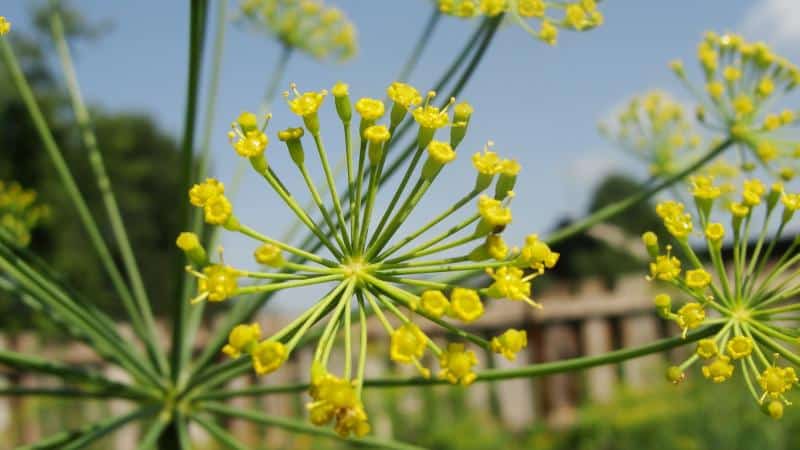
Proper care of plants is the key to a healthy, rich harvest. It consists of disease prevention, fertilizing, weeding, watering and loosening the soil.
The basis for preventing dill diseases is to prevent the plantings from becoming too dense, thin them out and pull out the weeds in a timely manner.
Organic fertilizers are used as fertilizing, for example, fermented nettle infusion. This nitrogen fertilizer is also protection for the plant, since aphids cannot tolerate it.
When watering, it is important to direct the liquid to the root, not to over-water it, and to loosen the soil after watering.
Collection and storage
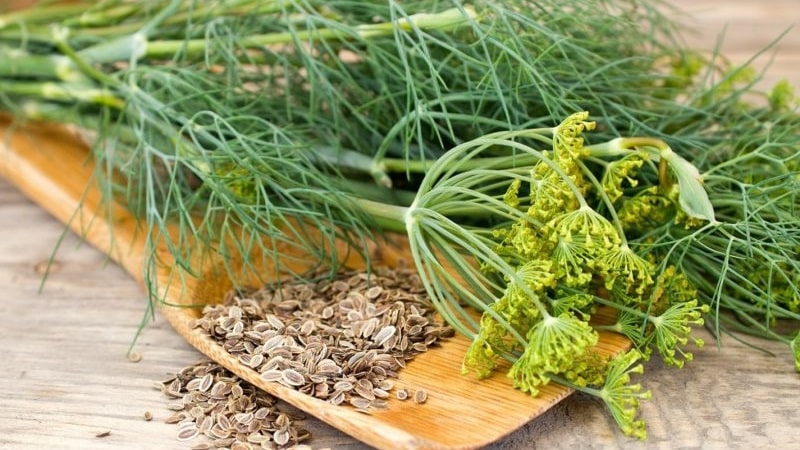
Harvesting of greenery begins when 4-5 leaves appear on the dill bush. The leaves are partially pinched off or cut off entirely with scissors. The collection is carried out in the morning, after the dew has dried, the plant is watered the day before. Dill for pickling is harvested after the umbrellas bloom.
Dill seeds are collected before they ripen by cutting off the inflorescences and placing them in a paper bag or gauze. In a dry and warm place, protected from sunlight, they ripen within a week. They are then separated from the stems and stored in an airtight container.
Leaves and young shoots are frozen, dried and pickled.
For freezing The greens are finely chopped, placed in small containers and stored in the freezer.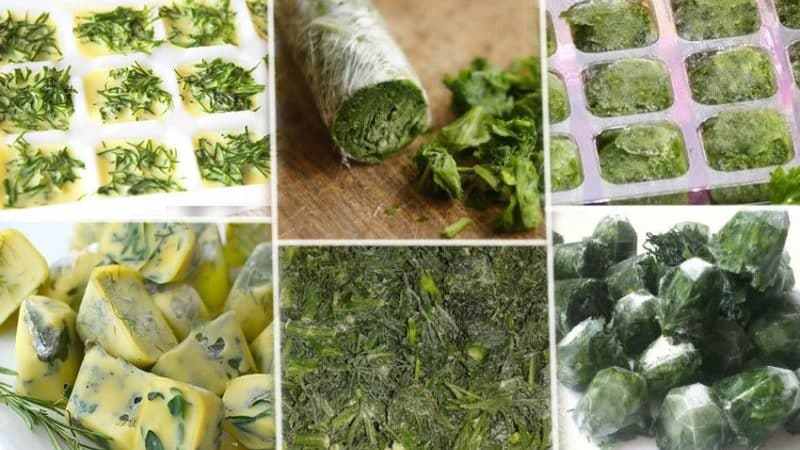
Dry dill is most often whole - tied into bunches and hung in a ventilated area.Or crushed and dried in the oven.
Salted in glass jars; to do this, sprinkle with salt and compact tightly. like this workpiece Store in the refrigerator for up to 6 months.
Conclusion
A common garden herb, dill, upon closer examination turns out to be an interesting and very useful plant. It’s easy to grow it on your site – just find a suitable place and follow basic care rules. By choosing the optimal variety according to climatic conditions, you will have fresh greens throughout the season.